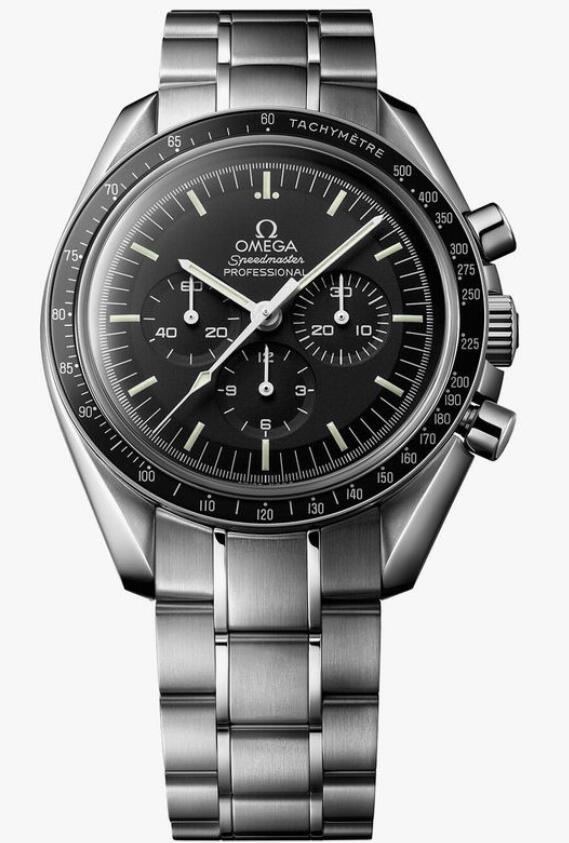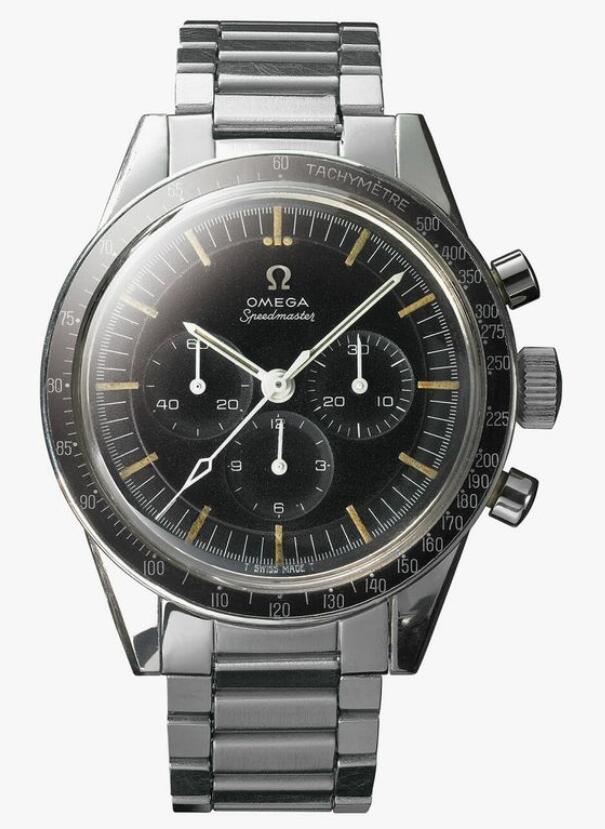
How The Best Quality Omega Speedmaster Replica Watches UK Beat NASA Torture Tests And Went To The Moon
In the late 1800s, celebrated French author Jules Verne published a pair of sci-fi novels predicting man’s journey to the Moon. They depicted a spacecraft being fired from a columbiad (a type of Civil War-era cannon) in Florida to the Moon, and subsequently splashing down in the Pacific Ocean.
A century later, on the morning of July 16, 1969, Verne’s premonition came true. The Apollo 11 spacecraft, whose command module was incidentally named Columbia, launched into orbit from the Kennedy Space Center in Brevard County, Florida. Just four days later, on July 20, 1969, it landed on the surface of the Moon. Inside, it carried four important crew members: Commander Neil Armstrong, Command Module Pilot Michael Collins, Lunar Module Pilot Buzz Aldrin and, last but not least, the perfect replica Omega Speedmaster mechanical chronograph watches.
Since that pivotal moment, the Speedy has become inextricably linked with the first lunar landing, even garnering the affectionate nickname “the Moonwatch.” NASA’s current Artemis program marks the first time in over 50 years for humans to return to the moon, and even longer since the history-making moment of the first man on the Moon — and the 1:1 UK Omega fake watches that accompanied him. Here, we’ll look briefly at the key steps that led Omega to become a part of the Apollo program, how the top Omega Speedmaster replica watches has evolved over the past five decades, and the role the iconic model continues to play in space travel today.
The Apollo Program
The Apollo Program continues to be considered one of the greatest technological achievements in history. Launched in 1963 with the mission to land humans on the Moon and bring them back to Earth safely, the Apollo Program was first conceived under the administration of President Dwight D. Eisenhower as a follow up to Project Mercury, which put the first Americans in space.
Funding for the program was later secured by President John F. Kennedy, whose campaign promised the U.S. would prevail in the global space race. While the first few Apollo missions didn’t achieve the goal of landing on the Moon, they set several major human spaceflight milestones: Apollos 7 and 9 were Earth-orbiting missions meant to test the Command and Lunar Modules, and Apollo 8 was the first crewed spacecraft to orbit a celestial body other than the Earth.
Apollo 8 also provided the first live televised photos of the Earth and Moon to roughly 50 million viewers around the country. This mission, along with Apollo 10, tested various spacecraft components and systems while orbiting the Moon and produced crucial images of the lunar surface. Still, the goal of the program wouldn’t be reached until the launch of Apollo 11 in 1969. But before the monumental first lunar landing could take place, NASA needed one other key piece of technology.
The NASA Watch Trials
A year after the launch of the Apollo Program, NASA started a search for a reliable timepiece to serve as the official 2023 Omega copy watches of the space program. They began the process by putting out a request for proposals from a select few brands: Elgin, Benrus, Hamilton, Mido, Lucien Piccard, Omega, Bulova, Rolex, Longines-Wittnauer and Gruen. Only four of the ten brands answered the call — Omega, Longines-Wittnauer, Rolex and Hamilton. However, Hamilton presented a pocket watch, and was thus disqualified for not complying with NASA’s specifications. The other watches — the Rolex 6238 “pre-Daytona,” the Longines-Wittnauer 242T, and the China Omega Speedmaster replica watches – were put through a rigorous series of tests. (Note: The 242T is the assumed reference that Longines-Wittnauer submitted, but this has yet to be confirmed.)
The NASA watch trials were essentially a torture program for the cheap replica Omega watches in question. They began with extreme temperature testing to simulate the intense climate of the Moon, where temperatures range from minus 260 degrees Fahrenheit to over 260 degrees Fahrenheit. Next, they evaluated the watches’ ability to withstand fluctuations in temperature and pressure to simulate additional changes in gravity. The luxury Omega fake watches were then put through another round of assessments to simulate changes in humidity and gravity. The next step was a shock test. Finally, this was followed by an acceleration test, decompression test and one last high-pressure test.
“The NASA watch trials were essentially a torture program for the watches in question.”
Finally, on March 1, 1965, the results were in. The Rolex model stopped running on two occasions during the relative humidity test and failed one of the temperature tests. The Longines-Wittnauer also failed one of the temperature tests as well as the decompression test. Then, there was the Swiss made Omega Speedmaster super clone watches: It gained 21 minutes during the decompression test and lost 15 minutes during the acceleration tests. The luminous material on the dial was destroyed, but all in all, the Omega chronograph performed satisfactorily. It was unanimous — the Speedy won by a landslide. However, NASA suggested a few improvements and modifications: the addition of a 24-hour rotating bezel and luminous markings to the elapsed time dials.
The Speedy that Went to the Moon
By 1969, the Omega Speedmaster replica watches wholesale had undergone a few additional revisions, and it’s here that we see the model start to take the shape of the beloved Speedy we know today. The new reference ST105.021 featured a more robust build with a thicker and larger 42mm case construction, crown guards and wider-set pushers, and is the model worn by Neil Armstrong on the Apollo 11 mission. (Michael Collins wore a different reference, the 145.012, which featured even larger and longer pushers.)
Both models housed the Omega Caliber 321 movement. Buzz Aldrin’s high quality fake Omega Speedmaster ST 105.012 watches, which was the actual watch worn on the Moon (and thus the original and only true “Moonwatch”), was later stolen under mysterious circumstances under transit to the Smithsonian Museum in the early 1970s, and remains one of the greatest lost timepieces in history.
The Evolution of the Speedmaster after Apollo 11
The AAA replica Omega Speedmaster watches’ role in the space program didn’t end after the monumental Apollo 11 mission. The model went on to be used in each subsequent Apollo mission, including the last flight, Apollo 17, which marked the sixth lunar landing in 1972. Even after the Apollo program ended, Omega’s work with NASA and other space programs continued. Shortly after in 1978, NASA actually asked Omega for several watches for re-certification in preparation for the Space Shuttle program that launched in 1981.
This time, the Speedmaster was placed up against 30 other candidates. Though some may argue it had an unfair advantage over the competition because of its history with NASA, it earned its place as the official watch of the space program once again. More recently in 2012, a Speedmaster accompanied Russian cosmonaut Gennady Padalka — the current record holder for the most days spent in space (a whopping 879) — on a trip to the International Space Station. This fake Omega watches shop was later auctioned in 2017 for an impressive $39,458.48.
“The Apollo missions may be space exploration history, but the story still resonates with people all over the world, and the fact that we played a role in that great adventure is invaluable for Omega as a brand.”
The Future of the Speedmaster in Space
In the decade before it became the Moonwatch, the Swiss movements Omega Speedmaster replica watches was without a doubt an incredible timepiece. Even the original “Broad Arrow” model introduced a groundbreaking feature — it was the first chronograph wristwatch to display a tachymeter scale on the bezel instead of the dial. Still, it’s challenging — maybe near impossible — to separate the Speedmaster, a watch originally conceived for motorsport — from the Apollo Program and the first lunar landing.
“The Apollo missions may be space exploration history, but the story still resonates with people all over the world, and the fact that we played a role in that great adventure is invaluable for Omega as a brand,” stated a representative from the brand. “At Omega, we possess a pioneering spirit, and the success of the Apollo 11 crew in 1969 continues to inspire us to be bold and take risks.”
Once the Moon had been reached, humanity’s relationship to the Speedmaster was forever changed. Without this history-making event, who knows what the model might have evolved into today. It’s safe to say that the legendary program and Moon landing have shaped the modern online Omega Speedmaster fake watches into the wristwatch we know and love.
With the renewed interest in space travel in the past several years, Omega’s work with NASA and other space programs is more important than ever before. They currently have their sights set on the proposed mission to Mars set for the 2030s. Even Buzz Aldrin remains involved with the work between NASA and Omega — the legendary astronaut is rumored to be part of the design process of a “Mars Watch” for Omega, which is, of course, speculated to be a variation of the Speedmaster.
However, in the not-so-distant future, NASA is looking to return to the moon once again with the Artemis program, first sending a crew to its orbit in 2024 and then to its surface possibly as soon as 2025. Of course, when they do so, Omega Speedmaster replica watches for men just might be part of the astronauts’ kit — “It is, after all,” says Omega, “the original ‘Moonwatch.’”
